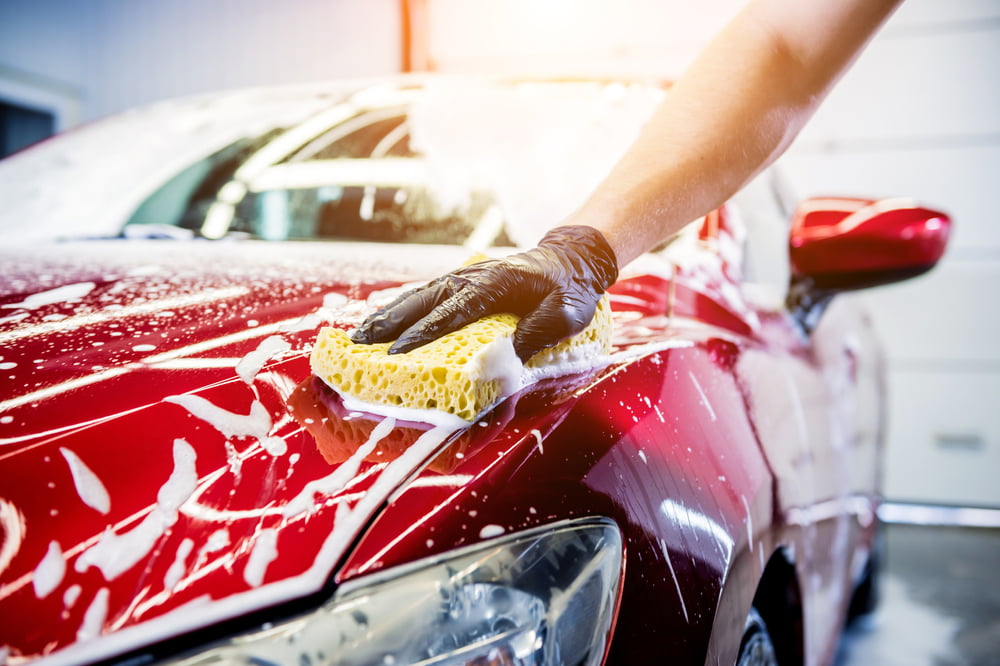9 common car cleaning mistakes to avoid

Whether one has recently purchased a car or already owns one, there’s a skill that one must master, which is washing the car. The task is more than just using a wet, soapy sponge to lather and then rinse the hull of your vehicle. Not doing it the right way could result in damaging the paint, causing rust to build up, and making the vehicle look dull and old. So here are eight mistakes to avoid when washing and cleaning your car.
Cleaning in direct sunlight
While one might know everything about how to clean their car, they might do so in direct sunlight. The surface of the automobile may become extremely hot when exposed to sunlight, which could result in scratches when one washes and cleans the car. Moreover, dirt, mud, and bird dropping may turn very dry in direct sunlight, making them harder to wash away. There might also be soap residue and water spots if it evaporates before you have rinsed it off properly. One of the best times to wash the car is after five in the evening or before nine in the morning when sunlight isn’t directly overhead.
Using sponges on paint
Most car owners use sponges to wash their automobiles. However, the product has a flat form factor, which isn’t great for lifting dirt or other debris from the vehicle’s surface. On the contrary, they might drag rock particles across the paint and leave scratches behind. A suitable alternative is to use wash mitts and microfiber towels to wash or clean the clear coat of the automobile. These have rinsed fibers that may help safely lift substances off the paint.
Using household products
Most individuals use household products to wash their car usually because it is much cheaper than those designed for automobiles. A few of these products include abrasive household cleaners, dish soap, glass cleaners, and bleach. However, this is one of the worst errors people could make because household products contain ingredients that may strip off protective wax from the car. The home cleaning products could leave the surface exposed to scratches and damage. Instead, use specially formulated products to clean cars, such as a dedicated shampoo for the body and a separate cleaner for windows.
Purchasing inferior products
People may purchase car washing and cleaning products that are available at an unbelievably low price. However, these might often be inferior and not work as well as those that cost more. Moreover, poor-quality products might damage the finish of the vehicle surface, which could cost you more to restore. So it may cost a few extra dollars, one should stick to using good quality products to wash and clean their vehicle.
Using incorrect materials
One cannot pick up any unwanted rag lying around at home to wash or clean their car. People tend to use old towels, t-shirts, and brushes to wash and clean the exterior of the car. Some even use paper towels to wipe the interiors. While these might seem to work, they are abrasive to paint and will eventually start leaving scratches one the vehicle’s surface. Instead, it’s best to use a microfiber cloth without rough edges. Furthermore, ensure you use a different microfiber towel for various purposes, such as drying and waxing. Also, avoid dipping the clothes or sponge in the same bucket.
Neglecting interior cleaning
Most people clean the outside of their cars and are satisfied with their work. But if you’re going to clean the automobile thoroughly, direct focus on the interiors. Leaving this area dirty could result in dirt, debris, and dust blowing back on the car’s exterior after cleaning it. To ensure that the interiors are appropriately cleaned, you should remove trash from the car, followed by putting the floor mats to clean them. Next, vacuum the interiors, and use a dedicated microfiber cloth and car interior soap to clean the center console, door panels, steering wheel, and dashboard. Wipe the other regions, including the interior windows, with fresh microfiber cloths.
Following the wrong order
Cleaning a car also has a specific order that can help one maintain the car’s clean look for a long time. So before cleaning the car, rinse it with water to remove loose debris and dirt. Follow this by washing the rims and tires using a dedicated brake dust and wheel cleaner to ensure no dirt particles stick to the car’s surface. After this, clean the car from top to bottom, starting with the roof, and rotate the microfiber towels. Also, remember to wash and clean the side mirrors, headlights, widows, and rubber moldings during the process. Lastly, wax (recommended product) and buff the car to make it shine.
Using magic erasers
Some individuals use magic erasers to remove dirt and grime from the vehicle’s surface. While it might work, the product is made from melamine foam – an abrasive material – that may also remove protective coatings from the car’s surface. Even finishes like wax, the clear coat on the paint, and tint on windows might get damaged after using the Magic Eraser on these regions. Moreover, the product has a drying effect that might strip away natural oils from the car and make it look dull and lifeless.
Taking the car to an automated car wash
An automated car wash could save a lot of time spent cleaning the car. However, one should limit the number of services. While the process is effective, the brushes usually collect leftover dirt and debris from other cars that pass through the machine. So, it might end up scratching the paint of your vehicle. Therefore, it is better to wash the car at a garage when you find the time or opt for a brushless car wash instead.







